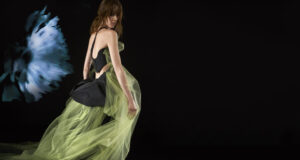
In his new cookbook, Cooking and the Crown: Royal Recipes from Queen Victoria to King Charles III, Tom Parker Bowles includes recipes for plenty of spectacular dishes, like Artichokes à la Barigoule and a Smoked Haddock Soufflé. But the first is an unexpectedly simple one: Queen Camilla’s Porridge. Parker Bowles, the queen’s son from her first marriage to Andrew Parker Bowles, has firsthand knowledge of the inner workings of the kitchen she shares with King Charles III. The younger Parker Bowles shares a few of those details, but otherwise tries to connect his modern-day food experiences with the great chefs and meals of royals past.
“People will think, Oh my god, a nepo middle-aged boy is doing this,” he says over a cup of green tea at the Carlyle Hotel, his home base during a recent trip to New York City. “I tried to keep it to a very, very minimum with the current king and my mother, having fought it like the plague—the topic of the royal family—for 25 years of writing about food. I would occasionally mention my mother’s roast chicken, and that was it. But it’s such a rich vein!”
Parker Bowles broke into food writing as a columnist at Tatler in 2001, and since he’s turned a penchant for world travel and openness to unusual experiences into a series of books on the subject. “I was always obsessed with food, but I suppose when I was sacked for the fifth time for being rubbish at a normal job, suddenly I realized I could have a whole career in it,” he explains. “For me, food is the easiest way to get to know someone. Even if you don’t speak Thai or your Spanish is bad, you can still rub your tummy and get a meal.”
For this book, he turned his eye to the more distant past, including a trip to the royal archives at Windsor, where he studied the handwritten records of the chefs who served the most notorious royal gourmand, King Edward VII. “Food brings us together, but it also divides us. Everyone expects royals in this gilded world to eat entirely different from us, and in the past they did. In the days of Victoria, Edward, and George V, they had the highest French cuisine you’re ever going to eat,” he says. “But if you look at how the king and my mom eat now, it’s very in tune with the rest of us. You no longer have 12 dishes for breakfast, 8 courses for lunch, and 12 courses for dinner.”
Still, even the current queen’s porridge recipe has a slightly luxe twist. Parker Bowles says that his mother loves to add a bit of the honey that comes from her own beehives at Ray Mill, her privately owned family home. The honey is high-quality, and what doesn’t go into the royal breakfast is often bottled and sold at Fortnum & Mason. Still, royal life has put some limits on his mother’s eating habits. “You can’t really go have a monster southern Thai curry before you go out the next day. There might be a risk when you’re going out to meet 500 people!” he says. “It’s the same with garlic. My mother doesn’t eat garlic.”
He credits his mother’s no-nonsense approach to cooking and his happy childhood for his inspiration to become a food writer. “I grew up in the country, and my mother was a really good cook. We had very English food—a roasted chicken and salmon and trout and game,” he says. Parker Bowles, a chile pepper obsessive who grows a range of them on his London balcony, admitted that his was a spiceless childhood, but he defends the cuisine nevertheless. “English food is massively underappreciated, because at its best, it’s very, very simple. You need to have the best ingredients to do it.
He says the queen denies she taught him how to cook, but, as a child, he did pick up tips from her work in the kitchen. “Her scrambled eggs were really good, and that she taught me. Although she’d say, ‘Oh, I didn’t teach anything,’ but she said scrambled eggs should be cooked for 20, 30 minutes,” he adds. She was also improvisational with her roast chicken. “My mother wouldn’t ever have a recipe, she’d just get all the ingredients for a sauce—all the ugly fats as well—and put it on the hob. She would chuck in a whole thing of double cream and mix it, then go to the garden, grab a handful of tarragon and mix it, and pour it back over the chicken.”
He also includes some reminiscences of some of the figures from his parents’ era of aristocrats, like a recipe from Deborah Mitford, the late dowager Duchess of Devonshire, whom he remembers as “at once terrifying, hugely glamorous, funny, and very kind indeed” from their encounters when he was a child. “She starts her cookbook by saying, ‘I’ve never cooked in my life, but I do talk to chefs a lot,’” he says with a laugh. “She was a great friend of my father’s, and she was an amazing lady. An Elvis obsessive!”




